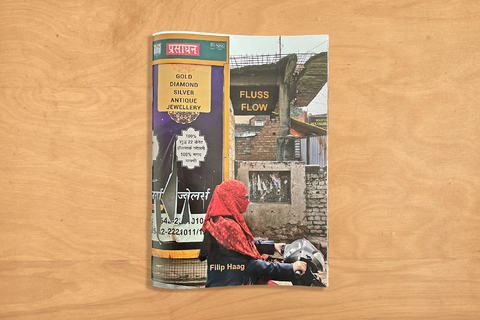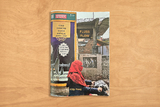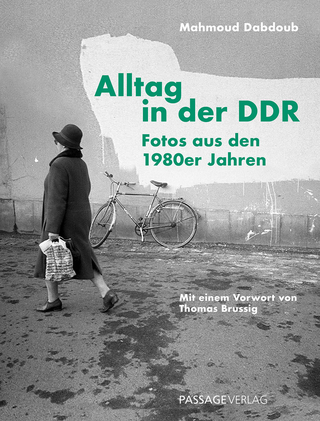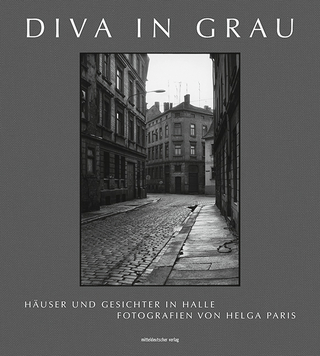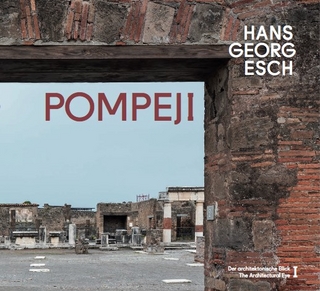Fluss / Flow
Edition Haus am Gern (Verlag)
978-3-907350-09-6 (ISBN)
1961; lebt und arbeitet in Bern; 3 Kinder 1981–1986 Studium Kunst- und Literaturgeschichte, Universität Zürich seit 1986 Künstler; Autodidakt Arbeitsaufenthalte in Berlin, New York, Varanasi
FLOW The image on the book cover depicts an advertisement for a jewellery store. Behind the advertisement is a newly built latrine - yet you have to know this, because it is not visible. A man who evidently is very poor, anxiously looks back over his shoulder while approaching the latrine. He is barefoot, the clothes he wears are too big for him, and neither his hair nor beard have received a cut for quite a while. He might not have a home, might not enjoy the luxury of living in a house. Does he look over his shoulder because he is not sure whether he is allowed to use the latrine? Who may, and who not use this facility? Alone again, our beauty continues to smile on the picture. Motorcyclists hurriedly rush by. The women in the foreground are going somewhere else, away from our beauty. Are they looking for a place to relieve themselves, where they cannot be seen? The beauty in the advertisement covers a latrine that can be used only by men. But where do women go to pee? Maybe they go to the shore of the holy river Ganges nearby, taking turns in holding up sheets to allow each other some privacy? The older man in the third image is on his way to another place, too. He might be going to mother Ganges, the holy river, too. Where does he come from? Is he here to immerse the ashes of a deceased relative in the Ganga's waters, granting salvation from the eternal circle of birth, rebirth, and death? For this is the main reason thousands of pilgrims come to Varanasi each day, to the holy city at the river Ganga's shores. Varanasi is also called the ,great cremation ground': dying here ensures immediate salvation. It might also be that the older gentleman is on his way to the morning yoga sessions at Assi Ghat, to get his blood flowing and to meet his old friends? Soon a 'Pani Puri' cart stops in front of the latrine, somehow framing it. This delicious snack is sold everywhere, though some foreign tongues might find it too hot. Whether Riksha driver, book vendor, traveler, or pilgrim - a plate of Pani Puri is inexpensive and keeps you alert. Even though some Pani Puri connoisseurs might be disturbed by the smell of the latrine, which is getting more intense by the hour. Lost in thoughts, a girl passes by our beauty on the advertisement. She's wrapped in a woolen shawl, as it is still pretty cold in the mornings. No, she's not on her way to school, for then she would wear a neatly ironed uniform, and her mother would have braided her hair tightly, shining with coconut oil. Where are you going, being so different from the beauty on the poster? Are you going to work? Are you some upper-class household's cleaning maid? Or are you on your way to one of.... (read in the publication) Ute Hüsken
| Erscheinungsdatum | 17.07.2022 |
|---|---|
| Zusatzinfo | Fotografien |
| Verlagsort | Biel/Bienne |
| Sprache | englisch; deutsch |
| Maße | 145 x 210 mm |
| Gewicht | 30 g |
| Themenwelt | Kunst / Musik / Theater ► Fotokunst |
| Kunst / Musik / Theater ► Kunstgeschichte / Kunststile | |
| Schlagworte | Filip Haag • Fotografie • Indien • Kunst • Varanasi |
| ISBN-10 | 3-907350-09-X / 390735009X |
| ISBN-13 | 978-3-907350-09-6 / 9783907350096 |
| Zustand | Neuware |
| Informationen gemäß Produktsicherheitsverordnung (GPSR) | |
| Haben Sie eine Frage zum Produkt? |
aus dem Bereich
